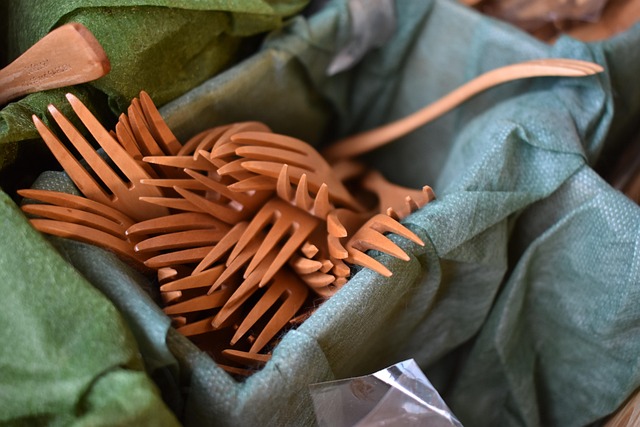Repurposing indoor furniture for outdoor spaces requires selecting durable materials like teak, cedar, or aluminum that can withstand various weather conditions. Clean-lined designs and simple styles enhance versatility while blending indoor-outdoor living seamlessly. Budget-conscious individuals can save money by exploring second-hand options, assessing furniture condition, and considering customization. Protective finishes, such as natural oils or water-based polyurethanes, ensure longevity and preserve aesthetics. These strategies enable the creation of an inviting outdoor space without breaking the bank, utilizing budget tips for outdoor living.
Repurposing indoor furniture for outdoor spaces has become a popular trend, allowing you to create a unique and personalized patio or garden. This guide explores how to transform your home’s interior pieces into durable outdoor furniture with protective finishes. We’ll delve into choosing the right materials, applying long-lasting coatings, and providing budget-friendly tips for a cost-effective outdoor living makeover while ensuring proper care and maintenance for years of enjoyment.
- Choosing the Right Furniture for Outdoor Repurposing
- – Considerations when selecting indoor furniture for outdoor use
- – Durability and material types suitable for outdoor environments
- Application of Protective Finishes
Choosing the Right Furniture for Outdoor Repurposing

When repurposing indoor furniture for outdoor spaces, selecting the right pieces is key. Consider furniture made from sturdy materials like teak, cedar, or aluminum—these withstand varying weather conditions and last longer than other options. Look for designs with clean lines and simple aesthetics; these tend to be more versatile and can seamlessly blend indoor-outdoor living spaces.
Budget-conscious individuals can find great deals on second-hand furniture that can be easily restored with a bit of DIY TLC. Antique stores, thrift shops, and online marketplaces offer a variety of options. Before making a purchase, assess the condition of the furniture and consider its potential for customization to suit your outdoor needs. This not only saves money but also contributes to sustainable living practices, transforming indoor pieces into extended budget tips for outdoor living spaces.
– Considerations when selecting indoor furniture for outdoor use

When repurposing indoor furniture for outdoor spaces, it’s essential to consider a few key factors. One of the primary concerns is ensuring the furniture can withstand varying weather conditions, including exposure to sunlight, rain, and potential frost. Opting for materials like teak, wrought iron, or treated wood that are naturally resistant to weathering can be a smart choice. Additionally, applying protective finishes such as sealants, paints, or varnishes designed for outdoor use will create a barrier against moisture and UV rays, extending the life of your furniture.
Budget-conscious tips for transforming indoor pieces into outdoor assets include looking for sales on suitable materials and finishes, exploring second-hand stores for gently used items, and considering DIY approaches to refinishing or upcycling. Remember that while it might take more effort upfront, investing in high-quality furniture and proper protective treatments will result in longer-lasting outdoor living spaces that are both functional and stylish.
– Durability and material types suitable for outdoor environments

When repurposing indoor furniture for outdoor spaces, it’s crucial to consider durability and suitable material types that can withstand varying weather conditions. Opting for weather-resistant materials like teak, cedar, or stainless steel ensures longer longevity compared to traditional options. These materials are naturally resistant to rot, decay, and rust, making them ideal choices for outdoor furniture. Additionally, applying protective finishes such as sealant, varnish, or polyurethane creates a barrier against moisture and UV rays, further enhancing durability.
Budget-conscious individuals can find affordable yet durable solutions by repurposing old wooden pieces with a simple refinish or by choosing metal or plastic furniture that already meets outdoor standards. These options offer accessibility to create an inviting outdoor living space without breaking the bank. Remember, selecting the right materials and finishes is key to enjoying your repurposed furniture for years to come while embracing creative budget tips for outdoor living.
Application of Protective Finishes

When repurposing indoor furniture for outdoor spaces, applying protective finishes is a crucial step to ensure longevity and preserve the look of your pieces. These finishes create a barrier between the furniture and harsh weather conditions, preventing water damage and UV ray fading. There are numerous options available at various price points, catering to different budgets and design preferences. For a cost-effective solution, consider natural oils like linseed or tung oil, which not only protect but also enhance the wood’s natural beauty. These oils can be easily applied with a brush or cloth and offer a matte finish that blends well with outdoor environments.
If you’re looking for more durable options, water-based polyurethane or acrylic sealers are excellent choices. They provide a clear coat that shields against moisture, dirt, and UV rays while maintaining the furniture’s original aesthetic. These finishes can be applied with a sprayer or brush and offer better protection than traditional varnishes, making them ideal for outdoor use. Remember, the right protective finish will not only extend the life of your repurposed furniture but also allow you to enjoy your budget-friendly tips for outdoor living for years to come.
Repurposing indoor furniture for outdoor spaces is an affordable way to enhance your budget tips for outdoor living. By considering the right materials and applying protective finishes, you can transform your home’s aesthetics and create a unique, functional outdoor area. With a bit of creativity and the right preparation, old indoor pieces can find new life in the fresh air, bringing both style and practicality to your outdoor environment.
